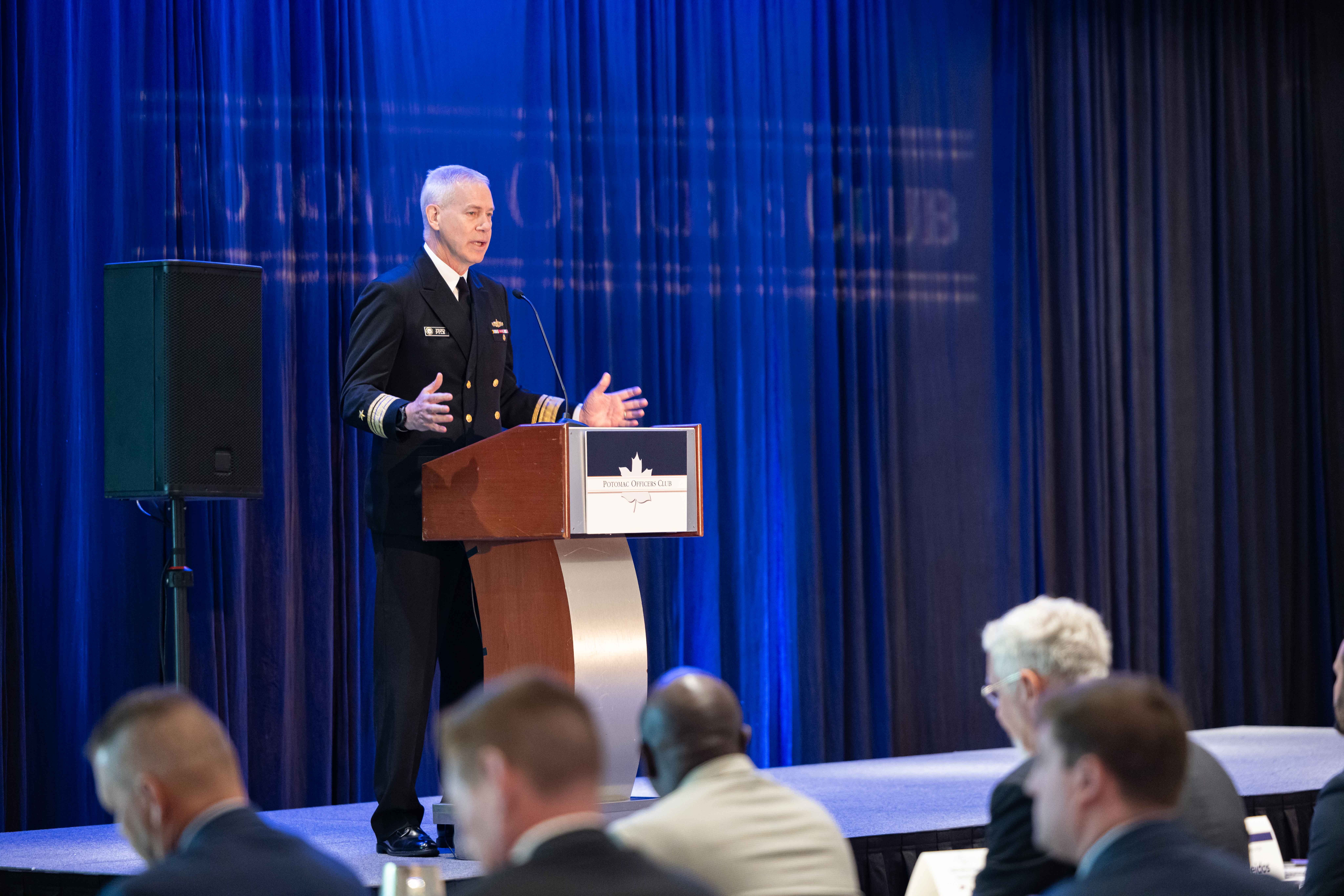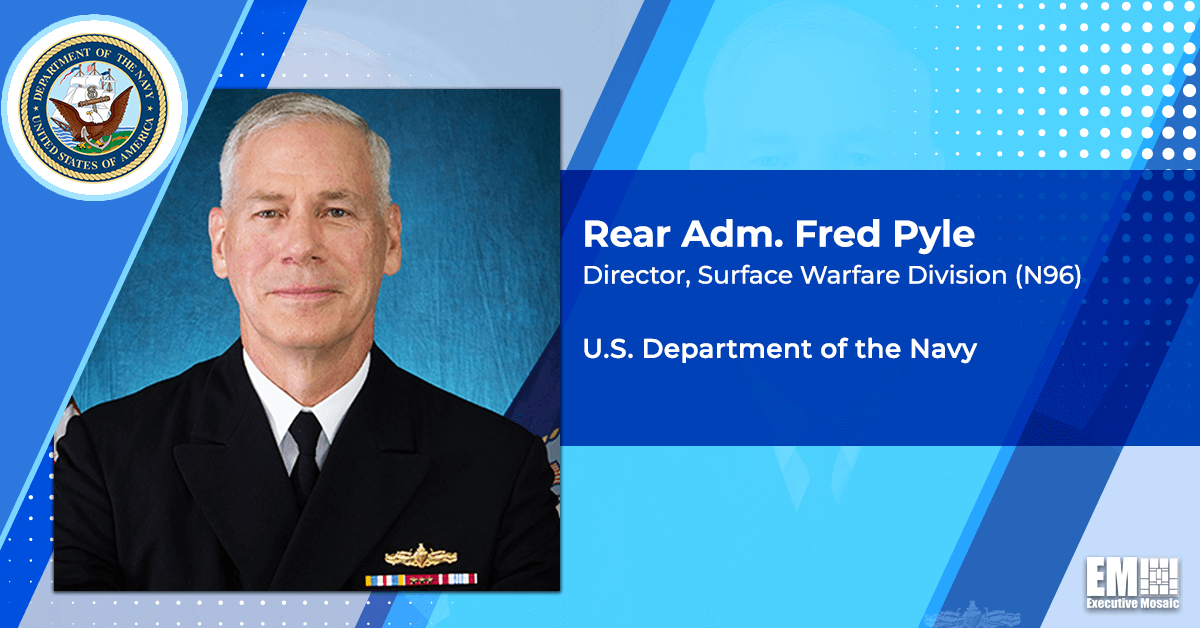The Department of the Navy has recognized the need for modernization and is working tirelessly to ensure that its forces are properly equipped for today’s constantly evolving battlespace. Informed by both Department of Defense-wide and internal strategies, the DON is taking major steps toward a future-ready fleet.

For Rear Adm. Fred Pyle, director of the Navy’s Surface Warfare Division, N96, getting there means harnessing the focus on sailors, readiness, capabilities and capacity that comes from National Defense Strategy, National Security Strategy and the DON-specific Navigation Plan to accelerate the development and deployment of new capabilities.
“From a Navy leadership standpoint – both uniform and civilian – we are battle minded. We are warfighting-focused, and we have a sense of urgency,” he said during his keynote address at the Potomac Officers Club’s 2023 Navy Summit last week.
To keep up with the pressing demand for new technologies, the Navy has a number of initiatives that are currently underway. Pyle shared that one way the service branch is making its goals a reality is by integrating its systems. Once integrated, he said, the process of making updates to systems and ships will be much faster than the speed at which physical hardware changes occur.
“[Integrated systems] will be able to take stovepipe systems that currently exist and build them into one battle management aid that we need to have for our warfighters,” Pyle explained.
This idea of flexibility also permeates N96’s shipbuilding efforts. Pyle highlighted the development of the DDG(X) – the Navy’s next-generation guided missile destroyer – as part of the “long game” the Navy is playing with its fleet.
Though other shipbuilding projects are already advancing, Pyle said that the DDG(X) is unique in that it is being designed to quickly adapt to evolving capability needs.
“It will have the ability to adapt to a larger sensor. It’ll have the ability to bring on directed energy. It’ll have the ability to bring on missile launchers – all things that we value in the high end fight, and we need to plan for that now and be ready to make that transition,” he elaborated.
Pyle noted that long-range fires, counter Command, Control, Communication, Computers, Cyber, Intelligence, Surveillance and Reconnaissance, terminal defense and contested logistics are also key focus areas for the Navy moving forward.
The effective use of new capabilities comes with knowledgeable people, and to manage the risk that comes with implementing a new technology, the Navy has invested heavily in training its forces, according to Pyle.
In doing so, the service branch has built “state-of-the-art” training centers, virtual training programs and other new training scenarios to build its people’s confidence in new systems before they are operationalized.
All of these efforts support the Navy’s forward operating posture, which Pyle said is “the most effective way to provide the projection of power to impose sea control, integrate with allies and partners and provide response to crises.”
“Since our most effective operating posture is forward, we need to have a rotational base from which to support it – ships and maintenance training, workups, deployment, sustainment – lather, rinse and repeat,” said Pyle.

Modernization is a DOD-wide effort. For a deep dive into current Air Force initiatives, priorities and challenges, the Potomac Officers Club is hosting its 2023 Air Force Summit on July 18. To learn more and register to attend the event, which will connect top Air Force officials and industry experts, click here.




